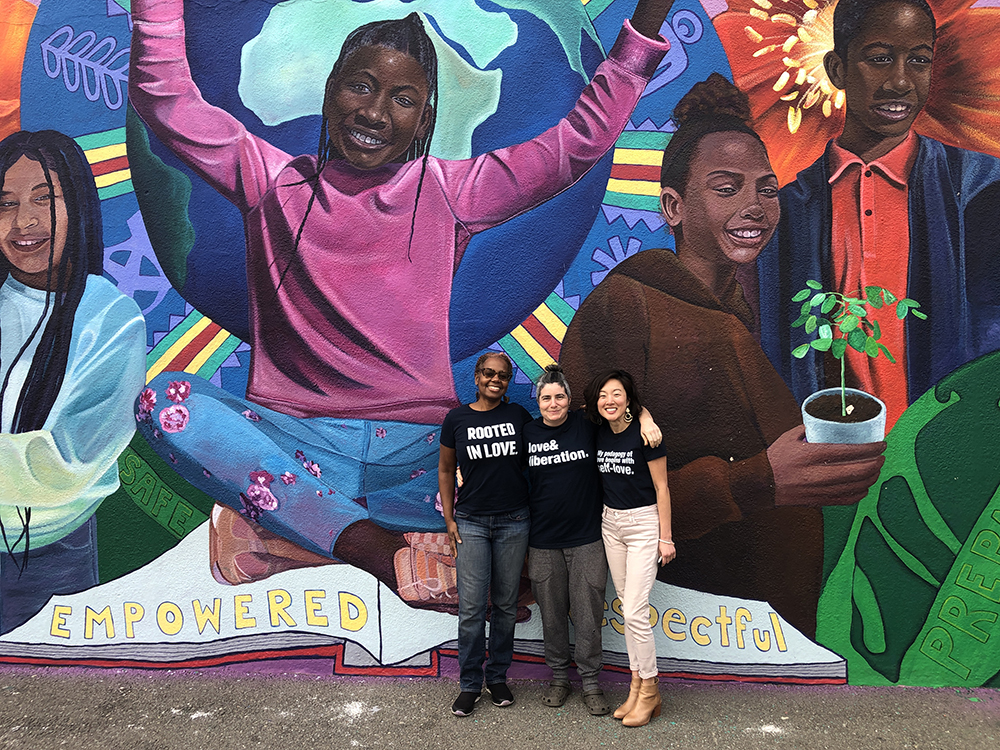You’ve Created a Diverse Grant Review Board – But Don’t Stop There

Sponsored by Submittable
It takes thoughtfulness, time, and hard work to create a review board that reflects the diversity of your applicant pool, shows your commitment to equality, and better ensures that you select the very best grantees for your mission in a fair manner. But the work doesn’t end there.
You’re moving along the right path, but there’s still distance to cover.
Creating a diverse team to review your grant applications is half the battle. The other half of the battle is creating an inclusive and properly functioning group. This involves making sure that:
- All of your team members’ voices are heard equally.
- All of your team members are accepted and respected by the group.
- All of your team members feel comfortable to speak and act.
Not creating an inclusive grant review board hurts everyone. Parading in diversity without backing it up with an inclusive environment often leads to high member turnover, poor organizational culture, and team members who battle alienation, microaggressions, and discrimination at work. It also means that the ultimate impact of your grants is harmed considerably.
In this post, we’ll take a look at why achieving inclusivity is a step worth taking as well as provide clear, actionable changes you can make to your grant management platform that can move you in the right direction.
Why diversity isn’t enough
Diversity without inclusion is like a fancy car that doesn’t run: it looks great, and it is great, but it isn’t going to get you far unless it works. What’s under the hood – what makes the vehicle actually vroom – is inclusivity.
Diversity is making sure you’ve checked all the right boxes.
Inclusivity is making sure you realize that those “boxes” are actual living, breathing individuals who need to feel welcomed, accepted, heard, and seen in order to do what they do best, and in order for you organization to benefit from their skills and knowledge.
Without inclusivity, achieving diversity can basically be a waste of time.
There have been a slew of studies that show diversity of all kinds isn’t just the right moral choice, it’s also the most beneficial choice for organizations.
It helps power innovation.
It improves company culture.
And it boosts the bottom line.
But these gains are in grave danger if your organization hires a diverse team without giving that team the right tools and roadmaps for success.
Inclusion is vital, specifically for review boards
Inclusion has been an important topic in recent years at workplaces across the globe – and that’s a great thing. It can sometimes be forgotten, though, in other groups attached to organizations’ core group of employees or volunteers, like submission and application review boards.
These boards range in size from a handful of employees to dozens or hundreds of volunteers. Some meet in person and some only interact remotely. But all of them could benefit from inclusivity strategies.
At the heart of review boards is hearing everyone’s voice and selecting the best applicants. But this cannot happen without an inclusive environment.
Every aspect of decision-making, debate, and collaboration requires two things: that everyone feels comfortable to voice their knowledge and opinions, and that everyone is able to hear those knowledge and opinions with minimal bias. If either piece of the puzzle is missing, you simply aren’t making the best decision possible – or you aren’t doing it efficiently.
5 tools & strategies for creating an inclusive review board
It’s one thing to know you need to establish an inclusive environment and another to create one. Many DEI initiatives can sound really good but lack concrete steps and strategies – especially ones that can be measured and monitored. Here are five good places to start.
Utilize anonymous review
We all suffer from biases of all kinds, from unconscious racial bias to confirmation bias to authority bias – and we take all of these biases into the review board process with us, whether we like it or not.
It makes sense: it’s easy to put more weight on the comments of the person with the most seniority, the person who speaks first, the person who speaks loudest, or the person who looks or sounds like you.
Anonymous review can do wonders to stop this bias. While it’s often used to protect applicants from feeling the unjust sting of bias and discrimination, with grant management software, it can also be utilized to level the playing field on the side of the review board. Suddenly, everyone’s opinion carries equal weight, if only because you don’t know who is commenting or scoring.
Create a scoring rubric
Another way to make your process more objective and fair is to create a scoring system that all of your review members use, based on any number of factors covered in the application form.
Grant management software like Submittable can allow even the most complex rubrics to be completed online and remotely, anonymously and also without participants seeing other reviewers’ scores.
Not only do rubrics prevent subjective scoring that could endanger your decision-making, it also makes it easy to pinpoint any review board outlines, especially if you have a large pool of reviewers.
Educate your reviewers
While systems and processes can help you create a better environment for your diverse review board, nothing should be executed without education. And not just one handout or one-hour training – we are talking about regular, in-depth, ongoing learning about preventing bias and engendering inclusion.
One of the best proven ways to fight bias is to simply be aware of it, since so many of our biases are socialized since birth and completely unconscious.
One of the best ways to stop microaggressions and exclusionary behaviors on review boards is to teach those with privilege what it’s like to look different, sound different, or feel different than most people in the room.
Check in with surveys
Along with education, another impactful step you can take is listening to the diverse members of your review pool. And don’t wait for them to come to you with their issues about being heard, fitting in, or feeling comfortable.
Regular surveys and interviews can help you make certain you’re checking in with your team on a regular basis. It can also help you collect data to track the success of your other inclusivity strategies over time. Submittable makes it easy to send surveys and report on the results, leaving you with hard evidence that you’re on the right path (or that you need to do more).
Engage in remote review
Using an online platform for grant application review comes with a lot of benefits, from speed and efficiency to cost. But many of the benefits of remote, online review also help with inclusivity.
As discussed above, online review can make the process anonymous among reviewers, so that everyone’s voice can be heard equally. It can also make complex scoring cards easy, increasing objectivity and decreasing the change that the loudest or more authoritative voice influences others and drowns out marginalized voices.
In addition, though, remote review can be a lifesaver for review members who speak English as a second language – and worry that their voice might not be heard or that their opinions will be overshadowed by their accent. It can also be wonderful for those with disabilities who need more time or different tools to review. It can be vital for review members who live in diverse geographic areas. It can also be vital for those with dissenting opinions who might be scared to speak up in person.
Putting inclusivity into the DNA of your grant review process
Inclusivity isn’t about having a half-day offsite retreat where you talk about your feelings (although, honestly, that’s a really great start). It’s about baking inclusive practices into every step of your review process and deliberately minimizing the chance of bias at every moment it rears its head. It’s about constantly listening and learning from the review board that you’ve already so carefully assembled.
Once you do that, it will pay off in spades: you’ll have less turnover, you’ll see better overall outcomes, and you’ll have a board that works in harmony (and even has fun). You’ll also notice a bonus: you won’t have to work so hard to keep your board diverse, because inclusion fosters even more diversity.
Start with just one strategy, and take your first step.



